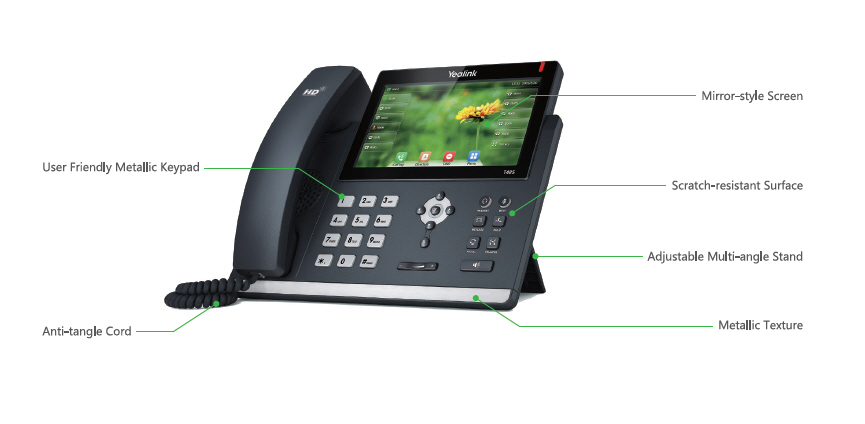Introduction
In today's fast-paced digital world, communication is paramount. Businesses rely heavily on voice calls for internal coordination, client interactions, and overall productivity. However, poor call quality can severely hamper these efforts. Bouncing back from poor call quality with effective VoIP strategies is not just about fixing a problem; it's about enhancing the overall communication experience. So, how do we tackle this pressing issue? This comprehensive guide will provide you with the insights and strategies needed to ensure crystal-clear calls using VoIP phone services.
What is VoIP Phone Service?
Voice over Internet Protocol (VoIP) phone service is a technology that allows users to make voice calls using an internet connection rather than a traditional telephone line. VoIP converts your voice into data packets and transmits them over the internet.
How Does VoIP Work?
Signal Conversion: Your voice is converted into digital signals. Data Transmission: These signals are sent over the internet. Receiving End: At the receiving end, the signals are converted back into sound.Advantages of VoIP Phone Service
- Cost-efficiency Flexibility Enhanced features (voicemail-to-email, video conferencing) Scalability
Understanding Poor Call Quality in VoIP
Poor call quality can lead to misunderstandings and frustrations during conversations. It often involves issues such as:
Common Symptoms of Poor Call Quality
- Echoing sounds Delay in conversation Distorted audio Dropped calls
Causes of Poor Call Quality
Bandwidth Issues: Insufficient bandwidth can cause delays and interruptions. Network Congestion: A crowded network can lead to packet loss. Hardware Limitations: Outdated equipment may not handle modern software requirements effectively.Bouncing Back From Poor Call Quality with Effective VOIPs’ Strategies
To improve call quality, businesses must take proactive steps in their use of VoIP technology.
Assessing Your Current Situation
Before implementing strategies, evaluate your current setup:
Check your internet speed. Analyze network traffic patterns. Review hardware performance.Choosing the Right VoIP Provider
Not all VoIP providers are created equal; look for:
- Reliability Customer support Features offered
Key Features to Look For in a Provider
| Feature | Importance | |-----------------------|-------------------------------------------| | Call Quality Guarantee | Ensures minimal downtime | | Scalability | Ability to grow with your business needs | | 24/7 Support | Quick resolution of any issues |
Upgrading Your Internet Connection
A robust internet connection is crucial for high-quality calls.
Recommended Speeds for VoIP Calls
For optimal performance:
- One line requires at least 100 kbps upload and download speed. Multiple lines might need 500 kbps or more.
Optimizing Your Network Settings
Adjusting network settings can significantly affect call quality:
Enable QoS (Quality of Service) settings on routers to prioritize voice traffic. Use Ethernet connections instead of WiFi where possible.Hardware Considerations for Better Call Quality
Investing in quality hardware can make Business Phone Service https://soundcurve.com/voip-phone-service-marion-county-or/ https://soundcurve.com/about-us/ https://soundcurve.com/contact-us/ a world of difference.
VoIP Phones vs Traditional Phones
VoIP phones are designed specifically to work with internet protocols and usually offer better sound quality than traditional landlines.


Essential Hardware Upgrades
Consider upgrading to:
High-definition VoIP phones Dedicated routers for voice traffic Power over Ethernet (PoE) switchesSoftware Solutions for Voice Clarity
Using reliable software solutions can enhance call clarity significantly.
Selecting Reliable Softphones
Softphones are applications that allow you to make calls using your computer or mobile device:
Popular Softphone Options
- Zoom Phone RingCentral Microsoft Teams
Regular Software Updates
Keep your software updated to benefit from improvements and security patches that enhance performance.

Training Employees on Best Practices
Employee training plays a vital role in ensuring smooth communication through VoIP services.
Key Training Areas Include:
How to troubleshoot common issues Proper equipment usage Recognizing signs of poor call qualityMonitoring Call Quality Regularly
Regular monitoring can help identify issues before they escalate into major problems.
Implementing Monitoring Tools
Use tools like:
VoIP test services Network monitoring software Performance dashboardsFAQs About Improving VoIP Call Quality
Q1: What should I do if my call drops frequently?
A1: Check your internet connection speed and try switching to an Ethernet connection if you're currently using WiFi.
Q2: How do I know if my bandwidth is sufficient for multiple calls?
A2: You can perform a speed test online and compare it against recommended speeds based on the number of simultaneous calls you expect.
Q3: What is QoS and why is it important?
A3: QoS (Quality of Service) prioritizes voice traffic over other types on your network, ensuring smoother communication without interruptions from other activities like streaming or downloads.
Q4: Do I need special equipment for VoIP?
A4: While you can use standard phones with an adapter, dedicated VoIP phones generally offer higher sound quality and better functionality tailored for internet calls.
Q5: Can poor call quality be due to my provider?
A5: Yes, sometimes it’s due to inadequate infrastructure or service limitations by your provider, so ensure you choose one known for reliability.
Q6: Is there any additional cost associated with upgrading my network equipment?
A6: There may be upfront costs involved in purchasing new routers or switches; however, improved call quality can lead to better productivity which offsets those costs long-term.
Conclusion
Bouncing back from poor call quality with effective VoIPs’ strategies is not just about technology; it's about creating a seamless communication environment that enhances productivity and client satisfaction alike. By assessing your current setup, upgrading hardware and software, investing in training, and continually monitoring performance, you'll create a robust system that fosters clear communication across all channels—ensuring no message gets lost in translation again!
By leveraging these insights into improving your VoIP phone service experience, you're well on your way to enjoying crystal-clear conversations that drive business success!